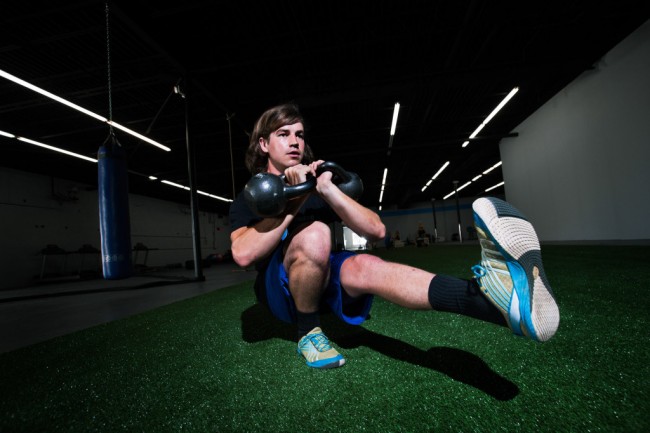
Lunges are a premier supplemental lift for Back Squats. Dave Tate wrote an incredibly informative article, that must be read by anyone interested in fitness and performance, on the place and how to effectively execute supplemental and accessory lifts: Dave Tate's Guide to Supplemental Movements with FULL Video.
When performing lunges their are a ton of different varieties. Most of which are how the load is placed on your body. Probably the most common lunge is the forward walking lunge. You can perform these by holding dumbbells or kettlebells at your sides, hold one and switch hands after each rep, have chains or a barbell on your back, etc. Less common are reverse lunges, but many strength coaches and fitness experts praise these over forward walking due to the nature of the movement. No matter if you are performing forward walking lunges, or reverse lunges, your movement is still in the sagittal plane. I would like to shed light on a different plane of motion; one that isn't too common in training regimes but is essential in sports.
Lateral lunges are lunges that are performed in the frontal plane. One could argue that many athletes move in the frontal plane of motion just about as much as in the sagittal plane. Some examples are football, basketball, and soccer athletes. Think about how often these athletes are shuffling laterally (mostly all of defense) or lateral change of direction (literally everyone). When you are sprinting and go to make a sharp cut your foot, knee, and leg as a whole will typically not be loaded at a perfectly straight (sagittal plane) angle. Your weight will be transferred into one leg; you then harness that weight and energy to explode into another direction. That "harnessing of weight" is the eccentric phase (loading phase) necessary prior to you making a sharp cut.
I'm not claiming that by performing lateral lunges you will develop "jukes" that rival Barry Sanders (I've been praying and trying for years); but you can see how these athletes are able to stick their foot in the ground and immediately change direction. When these athletes change direction it is almost never going to be straight in front of them, they will make a move into the lateral plane of motion.
Training the same muscle group, but in a different plane of motion adds a great variation to your workout regime. Lateral lunges can be performed in a variety of different loading options: barbell, chains, dumbbells, and kettlebells. As mentioned earlier, athletes in particular should be aware of the importance of implementing this workout and overall type of training into their routines. If your range of motion allows, workout other muscle groups or individual muscles in a variety of planes of motion.









1 Comment